This is most solitary place in all Angkor and the pleasantest. If it was truly the Mount Meru of the gods, then they chose their habitation well. But if the Khmers had chanced to worship the Greek pantheon instead of that of India, they would surely have built on Phnom Bakheng a temple to Apollo; for it is at sunrise and sunset that you feel its most potent charm.
To steal out of the Bungalow an hour before the dawn, and down the road that skirts the faintly glimmering moat of Angkor Wat before it plunges into the gloom of the forest; and then turn off, feeling your way across the terrace between the guardian lions (who grin amiably at you as you turn the light of your torch upon them); then clamber up the steep buried stairway on the eastern face of the hill, across the plateau and up the five flights of steps, to emerge from the enveloping forest on to the cool high terrace with the stars above you is a small pilgrimage whose reward is far greater than its cost in effort.
Here at the summit it is very still. The darkness has lost its intensity; and you stand in godlike isolation on the roof of a world that seems to be floating in the sky, among stars peering faintly through wisps of filmy cloud. The dawn comes so unobtrusively that you are unaware of it, until all in a moment you realize that the world is no longer dark.
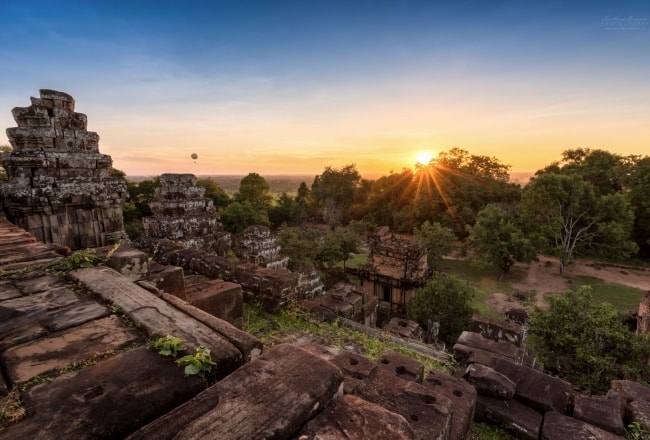
The sanctuaries and altars on the terrace have taken shape about you as if by enchantment; and far below, vaguely as yet but gathering intensity with every second, the kingdom of the Khmers and the glory thereof spreads out on every side to the very confines of the earth; or so it may well have seemed to the King-god when he visited his sanctuary how many dawns ago.
Soon, in the east, a faint pale gold light is diffused above a grey bank of cloud flat-topped as a cliff, that lies across the far horizon; to which smooth and unbroken as the surface of a calm sea, stretches the dark ocean of forest, awe-inspiring in its tranquil immensity.
To the south the view is the same, save where along low hill, the shape of a couchant cat, lies in the monotonous sea of foliage like an island. Westward, the pearl-grey waters of the great Baray, over which a thin mist seems to be suspended, turn silver in the growing light, and gleam eerily in their frame of overhanging trees; but beyond them, too, the interminable forest flows on to meet the sky.
It is only on the north and northeast that a range of mountains the Dangrengs, eighty miles or so away breaks the contour of the vast, unvarying expanse; and you see in imagination on its eastern rampart the almost inaccessible temple of Preah Vihear.
Immediately below you there is morning is windless; but one after the other, the tops of the trees growing on the steep sides of the Phnom sway violently to and fro, and a fussy chattering announces that the monkeys have awakened to a new day.
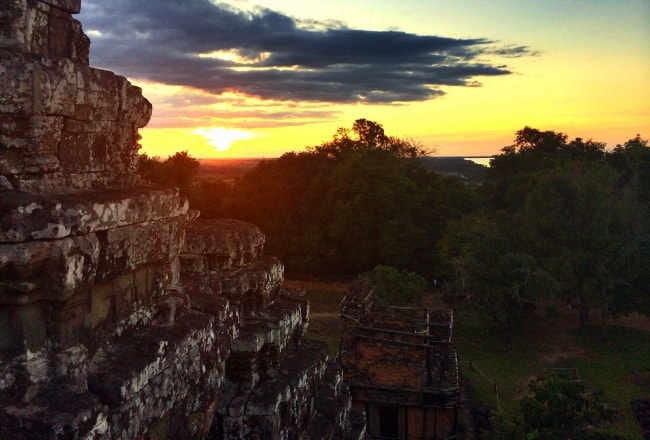
Near the bottom of the hill on the south side, threadlike wisps of smoke from invisible native hamlets mingle with patches of mist. And then, as the light strengthens, to the southeast, the tremendous towers of Angkor Wat push their black mass above the grey-green monotony of foliage, and there comes a reflected gleam from a corner of the moat not yet overgrown with weeds.
But of the huge city whose walls are almost at your feet, and of all the other great piles scattered far and near over the immense plains that surround you, not a vestige is to be seen. There must surely be enchantment in a forest that knows how to keep such enormous secrets from the All-Seeing Eye of the sun.
In the afternoon, the whole scene is altered. The god-like sense of solitude is the same; but the cool, grey melancholy of early morning has been transformed into a glowing splendor painted in a thousand shades of orange and amber, henna and gold. To the west, the bray, whose silvery waters in the morning had all the inviting freshness of a themes backwater, seems now, by some occult process to have grown larger, and spreads, gorgeous but sinister, a sheet of burnished copper, reflecting the fiery glow of the waste ring sun.
Beyond it, the forest, a miracle of color, flows on to be lost in the splendid conflagration; and to the north and east, where the light is less fierce, you can see that the smooth surface of the sea of treetops wears here and there all the tints of an English autumn woodland: a whole gamut of flowing crimson flaring scarlet, chestnut brown, and brilliant yellow; for even these tropic trees must 'winter
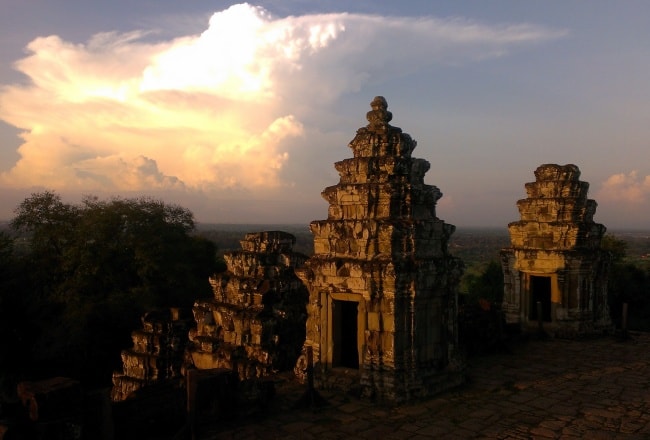
By this light you can see, too, what was hidden in the morning that for a few miles towards the south, the sweep of forest is interrupted by occasional patches of cultivation; rice fields, dry and golden at this season of the year, where cattle and buffaloes are grazing.
As for the Great Wat, which in the morning had showed itself an indeterminate black mass against the dawn; in this light, and from this place, it is unutterably magical. You have not quite an aerial view the Phnom is not high enough for that; and even if it were, the ever encroaching growth of trees on its steep sides shuts out the view of the Wat's whole immense plan. But you can see enough to realize something of the superb audacity of the architects who dared to embark upon a single plan measuring nearly a mile square.
Your point of view is diagonal; across the north west corner of the moat to the soaring lotus-tip of the central sanctuary you can trace the perfect balance of every faultless live. Worshipful for its beauty, bewildering in its stupendous size there is no other point from which the Wat appears so inconceivable an undertaking to have been attempted much less achieved by human brains and hands.
However, that may be even while it, the scene is changing under your eyes. The great warm-grey mass in its setting of foliage, turns from grey to gold; from the fold to amber, glowing with ever deeper and deeper warmth as the sun sinks lower. Purple shadows creep upwards from the moat, covering the galleries, blotting out the amber glow; chasing it higher and higher, over the poled up roofs, till it rests for a while on the tiers of carved pinnacles on the highest tower, where an odd one here and there glitters like cut topaz the level golden rays strike it.
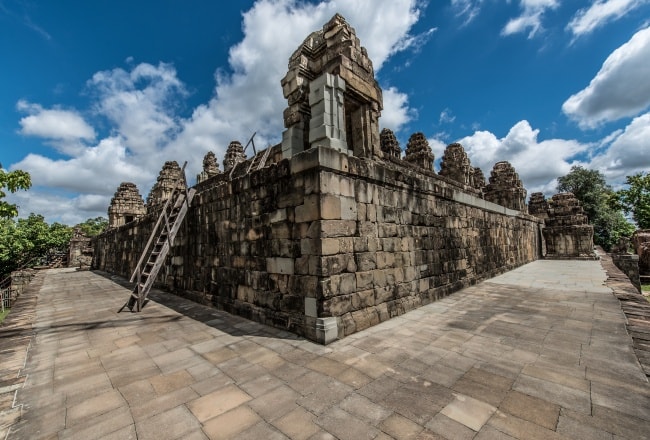
The forest takes on coloring that is ever more autumnal the Baray for ten seconds is a lake of fire; and then, as though the lights had been turned off the pageant is over...and the moon, close to the full, come into her owe, shining down eerily on the scene that has suddenly become so remote and mysterious; while a cool little breeze blows up from the east, and sends the stiff, dry teak-leaves from the trees on the hillside, down through the branches with a metallic rattle.
There is one more change before this nightly transformation-scene is over: a sort of anti-climax to be seen in these. Soon after the sun has disappeared, an after-glow lights up the scene again so warmly as almost to create the illusion that the driver of the sun's chariot has turned his horses and come back again.
Here on Bakheng, the warm tones of sunset return for a few minutes, but faintly, mingling weirdly with the moonlight, to bring effects even more elusively lovely than any that have before. Then, they too fade; and the moon, supreme at last, shines down unchallenged on the airy temple.
It is lonelier now. After the gorgeous living pageantry of the scene that went before it, the moon's white radiance and the silence are almost unbearably deathlike far more eerie than the deep darkness of morning with dawn not far behind. With sunset, the companionable chatter of birds and monkeys in the trees below has ceased; they have all gone punctually to bed; even the cicadas for a wonder are silent. Decidedly it is time to go.
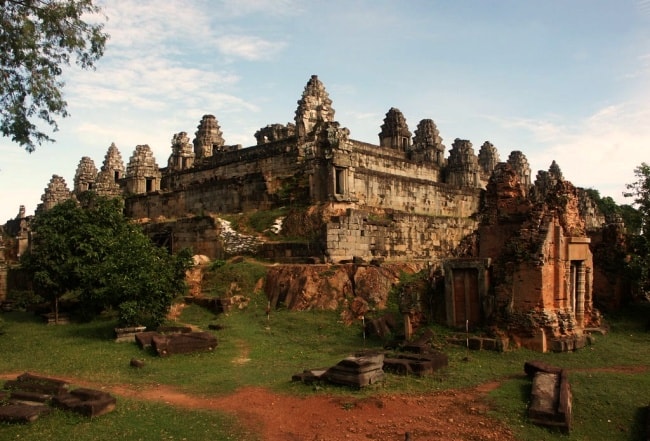
Five almost perpendicular flights of narrow-treaded steps leading down into depths of darkness are still between you and the plateau on the top of the Phnom: the kind of steps on which a moment of sudden, silly panic may easily mean a broken neck –such is the bathos of such mild adventures.
And once on the plateau you can take your choice of crossing it among the crumbled ruins, and plunging down the straight precipitous that was once a stairway- or the easy, winding path through the forest round the south side of the hill, worn by the elephants of the explorers and excavators.
Either will bring you to where the twin lions sit in the darkness black now, for here the trees are too dense to let the moonlight through, and so home along the straight road between its high dark walls of forest, where all sorts of humble, half-seen figures flit noiselessly by on their bare feet, with only a creak now and again from the bundles of firewood they carry, to warn you of their passing.
Little points of light twinkle out from unseen houses as you pass a hamlet; and, emerging from the forest to the moat-side, the figures of men figures of men fishing with immensely long bamboo rods, from the outer wall, are just dimly visible in silhouette against the moonlit water.
HW Ponder, Cambodian Glory, The Mystery of the Deserted Khmer Cities and their Vanquished Splendor, and a Description of Life in Cambodia today) Thornton Butter worth, London, 1936)
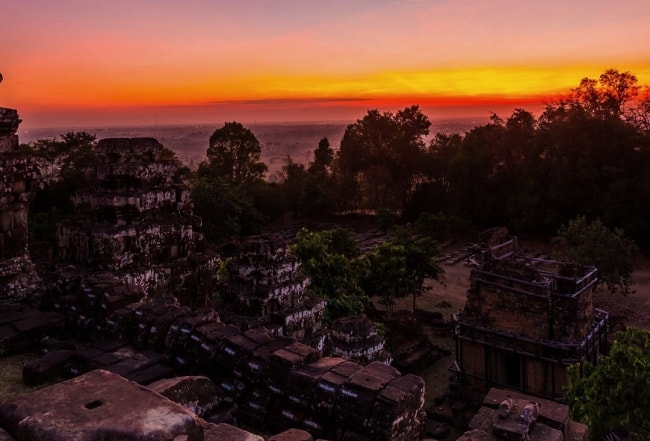
It is difficult to believe, at first, that the steep stone cliff ahead of you is, for once, a natural feature of the landscape, and not one of those mountains of masonry to which Angkor so soon accustoms you. The feat of building a flight of wide stone steps up each of its four sides, and a huge temple on the top, is a feat superhuman enough to tax the credulity of the ordinary mortal.
The temple of Bakheng was cut from rock and faced with sandstone. Traces of this method are visible in the northeast and southeast corners. It reflects improved techniques of construction and the use of more durable. This temple is the earliest example of the plan with five sandstone sanctuaries built on the top level of a tiered base arranged like the dots on a die, which became popular later. It is also the first appearance of secondary towers on the tiers of the base.



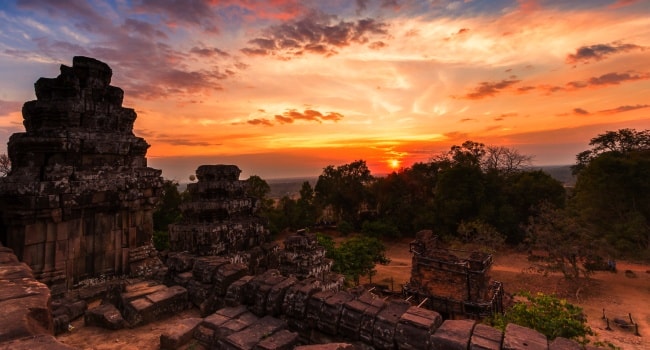

 24/12/2025
24/12/2025





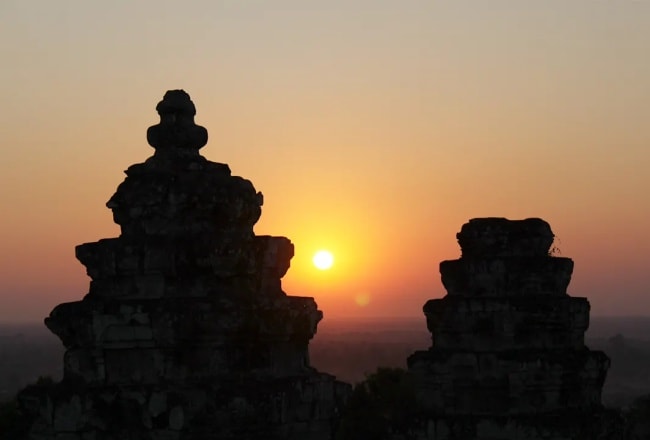
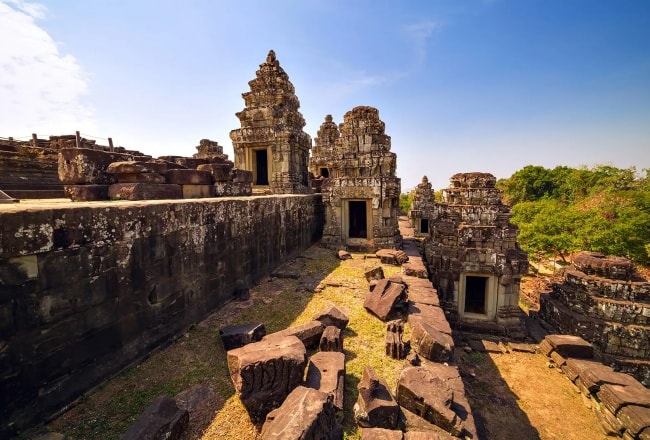
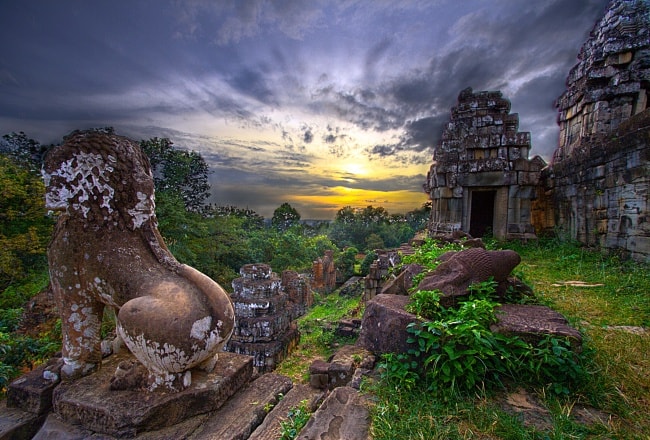
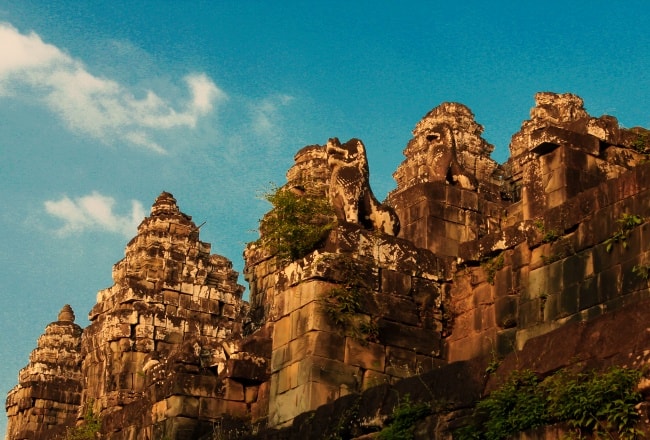
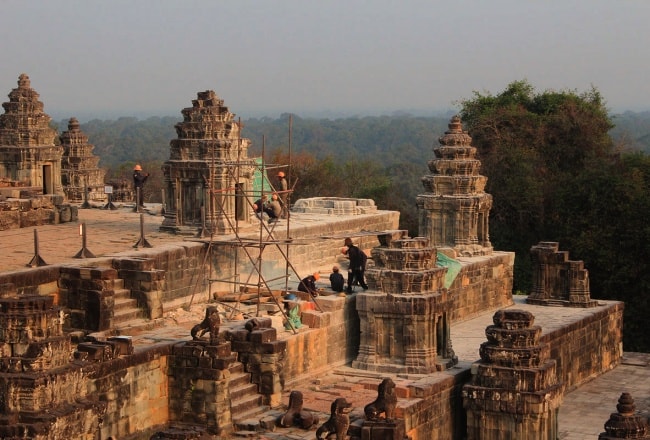
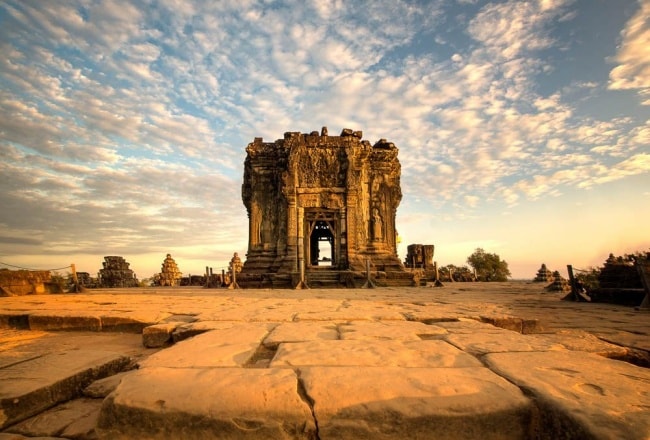
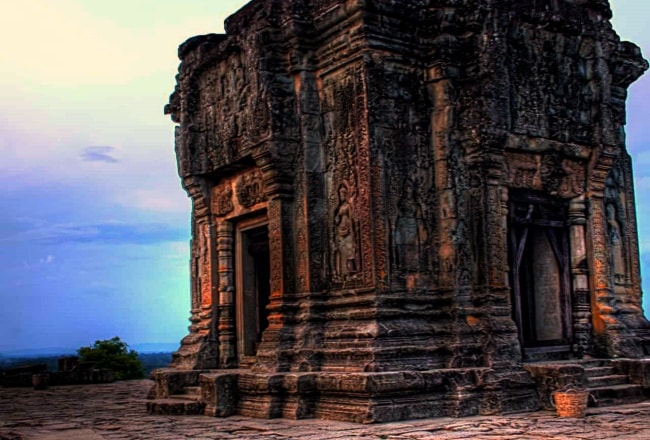
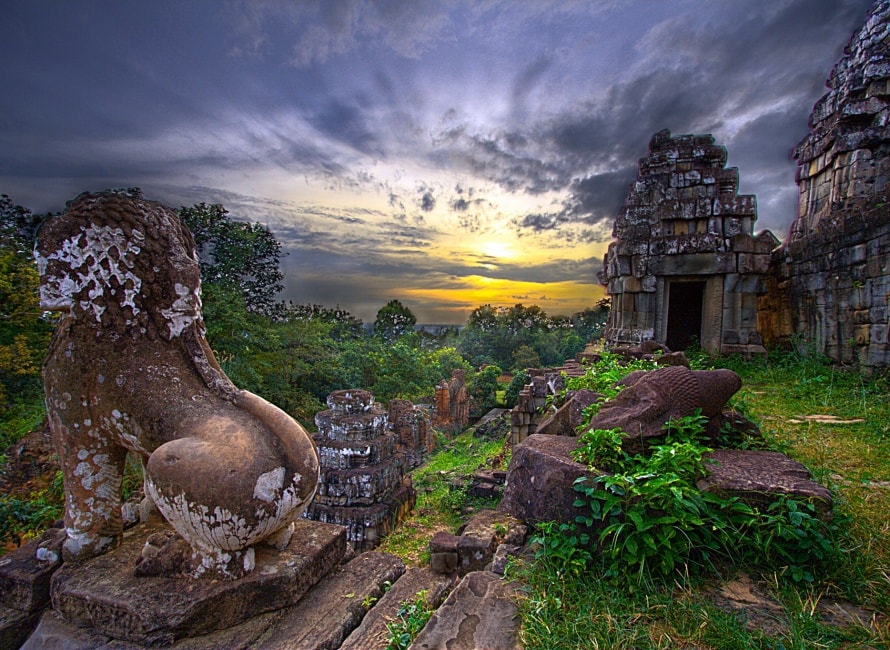
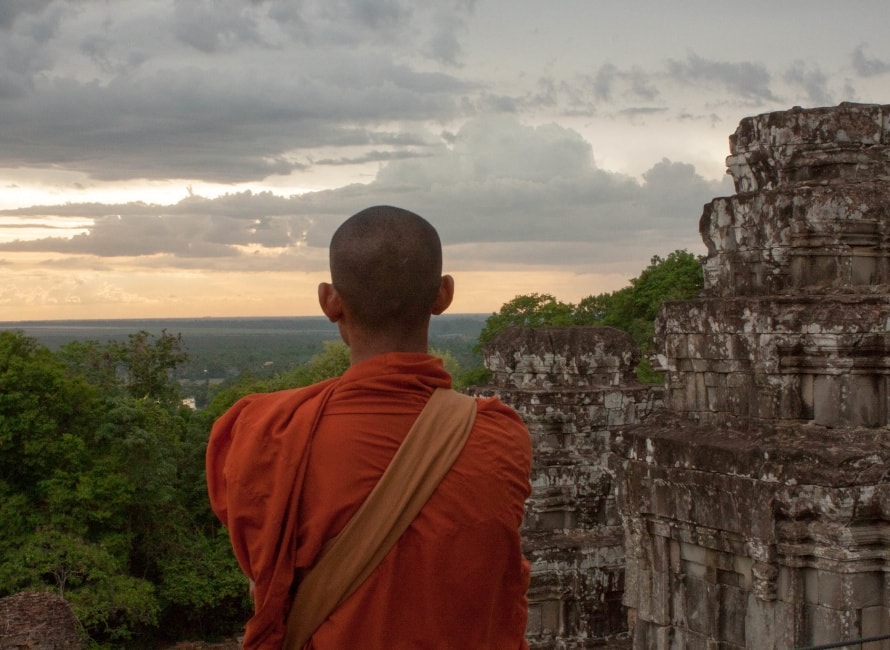
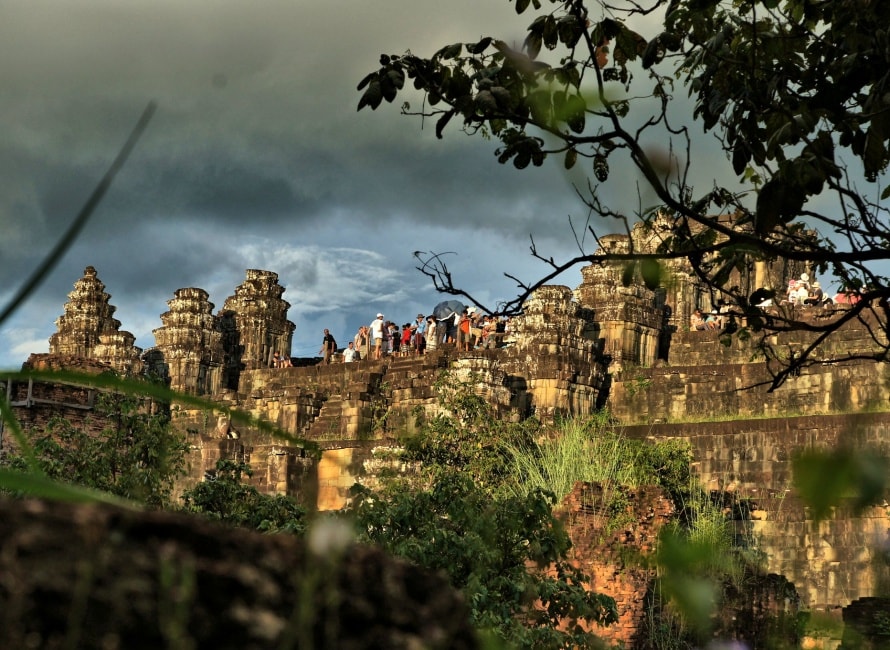
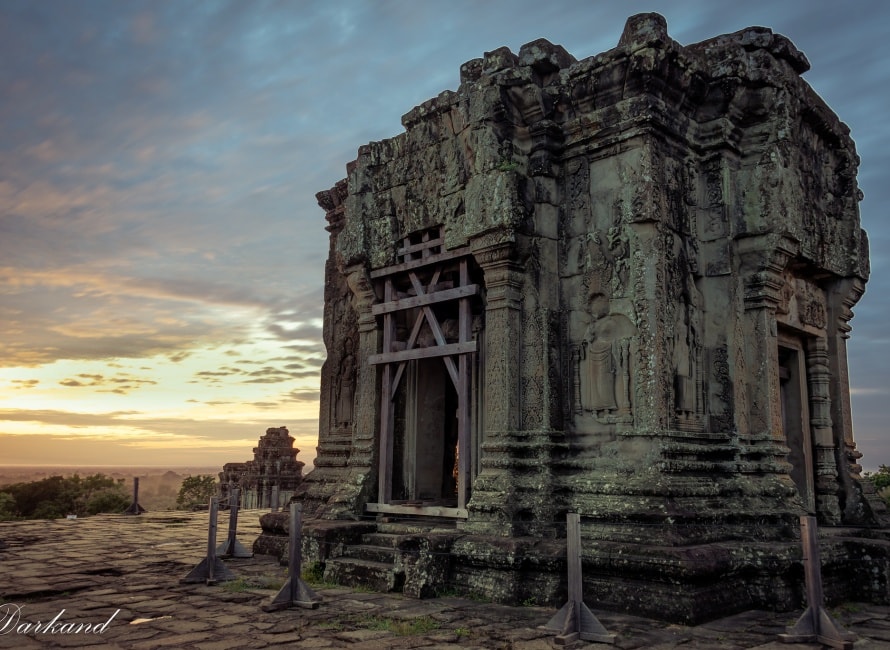

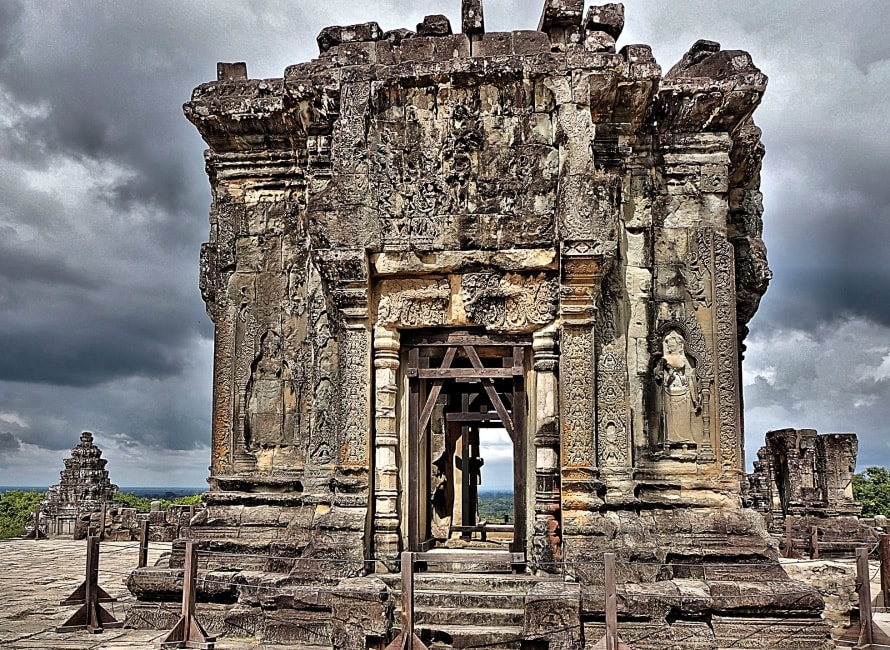
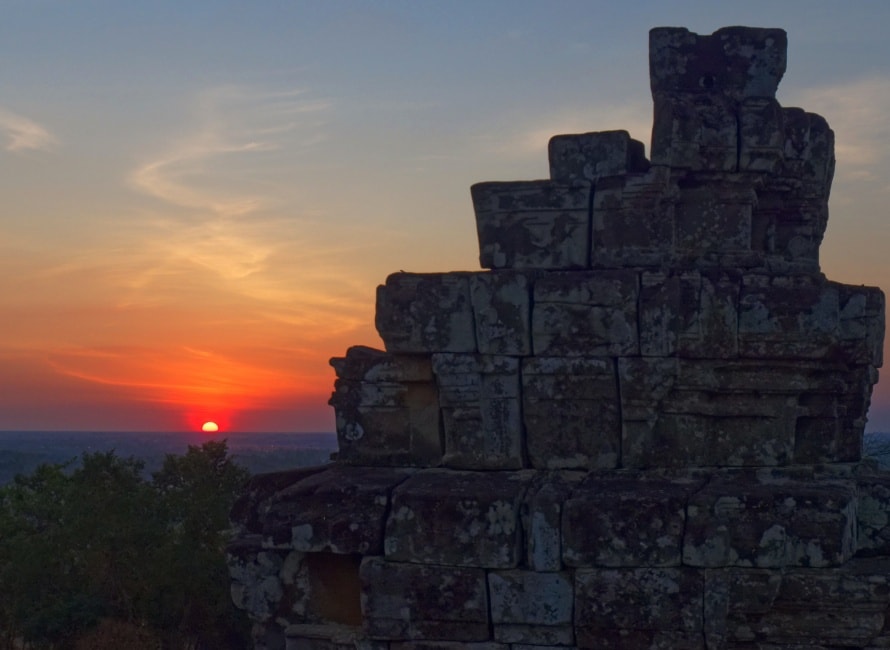
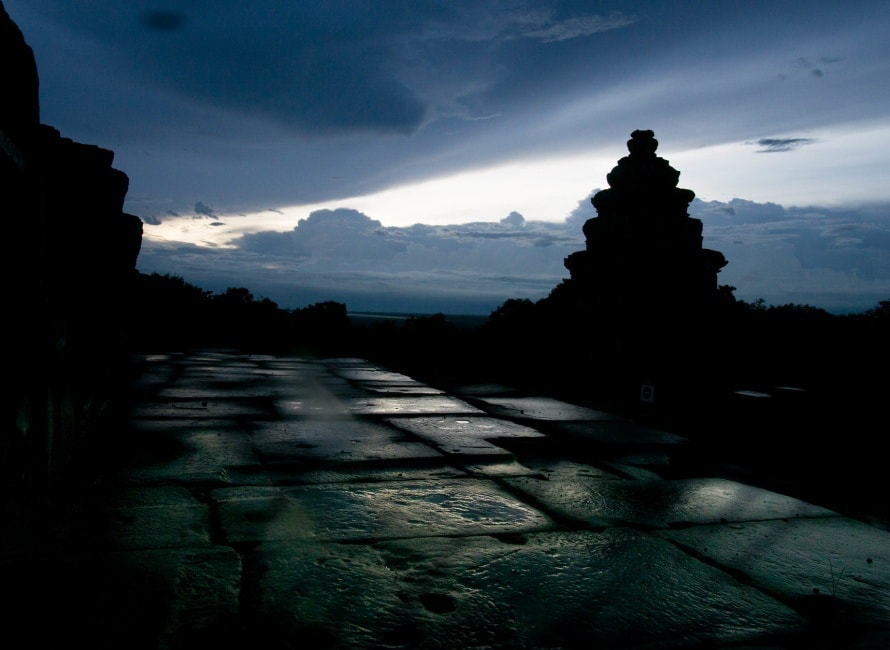
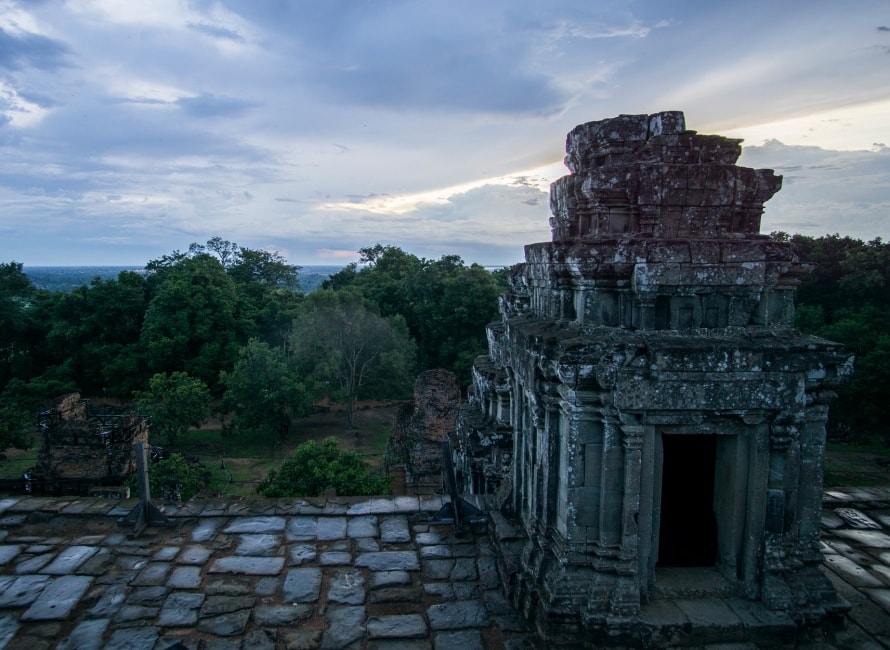




















Jolie LIEMMy name is Jolie, I am a Vietnamese girl growing up in the countryside of Hai Duong, northern Vietnam. Since a little girl, I was always dreaming of exploring the far-away lands, the unseen beauty spots of the world. My dream has been growing bigger and bigger day after day, and I do not miss a chance to make it real. After graduating from the univesity of language in Hanoi, I started the exploration with a travel agency and learning more about travel, especially responsible travel. I love experiencing the different cultures of the different lands and sharing my dream with the whole world. Hope that you love it too!